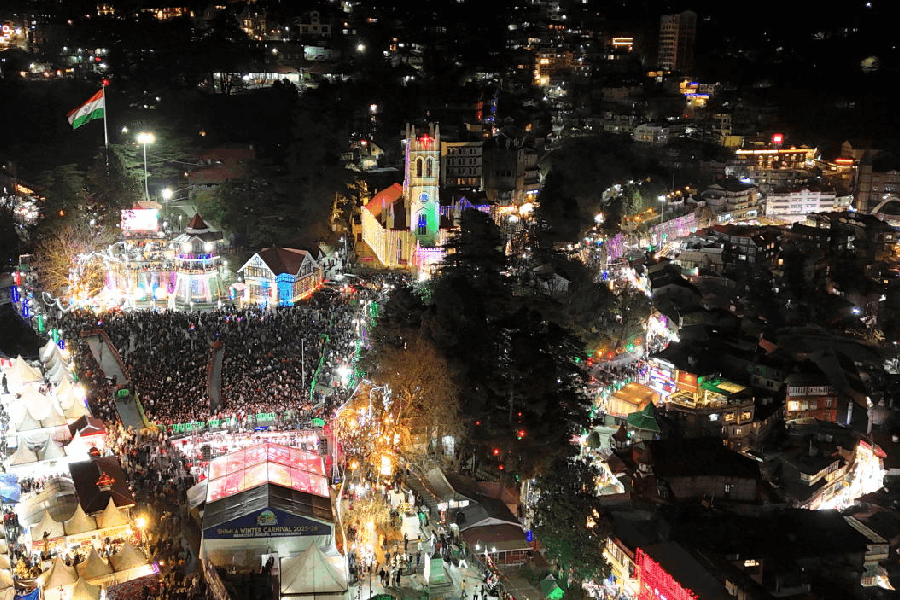|
|
| Dalit students staging a protest |
Bharathipura By U.R. Ananthamurthy, Oxford, Rs 450
The author, U.R. Ananthamurthy, is amongst those important novelists who have made a name for themselves in the category of post-colonial writers of India. He is a teacher of English who writes in his mother tongue, Kannada. He has written such works as Samskara, and has to his credit collections of short stories and poems that have, at times, added polemical elements to Kannada literature. He has also enriched regional literature and made it stand on a par with Indian writing in English.
Bharathipura was first published in 1973 in Kannada. Though the idea of the novel seems dated, the narrative has not ceased to touch a chord among sensitive readers who have decided to turn over the pages. This translation into English by Susheela Punitha — a teacher of English language and literature — gives readers a fair idea about the original work. Punitha manages to retain some of the flavour of the original, though like all translations this work, too, cannot be looked upon as an alternative to the original. But for us who have no knowledge of the language, the translation helps to break the misconception that regional literature is inferior to works written in English.
Together with Samskara, Bharathipura forms the major works of U.R. Ananthamurthy. The novel deals with the sensitive topics of untouchability and caste system in India during the 1970s. Nearly 40 years after Prem Chand’s Godan, Bharathipura, once again, made people sit up and think whether everything was okay about the age-old concept of the caste system in traditional Indian society.
India was slowly inching towards modernity brought about by the economic forces inside and outside the country during the post-independence era. These forces were changing the outlook of the people. The plot contains a beautiful story line. A wealthy landlord returns home, only to be confronted with realities on multiple fronts which he wants to change. Back from England, Jagannatha discovers that people from the lower caste continue to be debarred from entering the temple of Manjunatha. This is because the locals believe that the spirit of the Bhootaraya may drag them by the feet and make them spit blood. Jagannatha wants to take these exploited people into the temple in order to prove that nothing of the sort will ever take place. He wants to break the myth of the gods that has kept the Holeyaru — people from the lower caste — in subservience for thousands of years. The whole novel is about how he manages to create awareness in a people who refuse to break free from the tyranny of old bonds. This was not only because the Brahmins regarded them as lowly born but also because over a period of time they had started believing that they really were untouchables.
Ananthamurthy weaves a complex web of myth and reality into the narrative. He uses images and symbols to deconstruct the past, merge it with the present, and then chart a course for the future so as to liberate the Indian way of life from a make-belief world and help it confront the changing realities of the post-Nehruvian era. The novel not only demystifies an old belief, but it also chronicles encounters with new realities on different fronts.
When Margaret writes a letter from England and confesses to Jagannatha — who wages a battle in India to take the Holeyaru to the forbidden temple — that she has developed an interest in another man in his absence, he is shaken. But soon, he settles down and accepts his loss as a part of the harsh reality he has to face in life. But when someone writes a nasty, anonymous letter which alleges that his birth lacks legal legitimacy, he finds it difficult to accept that his mother had gone to bed with a stranger. His dilemma — like Hamlet’s in the Shakespearean play — is worth examining. His capacity to rise to the occasion and not lose focus is also remarkable.
Some of the images in the novel remain etched in our memories. For example, when the Holeyarus touch the saligrama — the holy object in the temple — or when Jagannatha asks them to touch him, the novel seems to have succeeded in defying the constraints of time and space. Touch plays an important part in the novel as it does in many other stories by Ananthamurthy. This is because the notion of touch is intrinsically linked to the caste system.
But such moments are few and far between. There are certain things that Ananthamurthy seems to have blissfully forgotten, probably because of the medium he has chosen to do his writing in. For instance, had he been writing in English, he would have taken into consideration the possibility that the discerning reader may not be pleased with the narrative technique that he has employed in the novel. The characters fail to keep pace with the changes in the events as the novel continues to stick to the world of action.
One more thing. Jagannatha tries to take the people from the lower caste to the temple, but the irony is that he knows very little about them. Since 1973, much has taken place as far as Dalit emancipation is concerned. Therefore, reading a novel like Bharathipura today may compel readers to think that the setting has fallen behind the times.
Ananthamurthy’s contemporaries failed to understand him because of his ideas. The Brahmins thought him to be anti-Brahmin and the progressives thought he was a reactionary. But he was neither, for like any other writer he was only experimenting with ideas. As he once told one of his interviewers, a writer “is a guinea pig, who experiments on himself”. Had Bharathipura been re-invented to adapt to the changes prevalent in modern India, the novel would have had a greater punch than it does.












